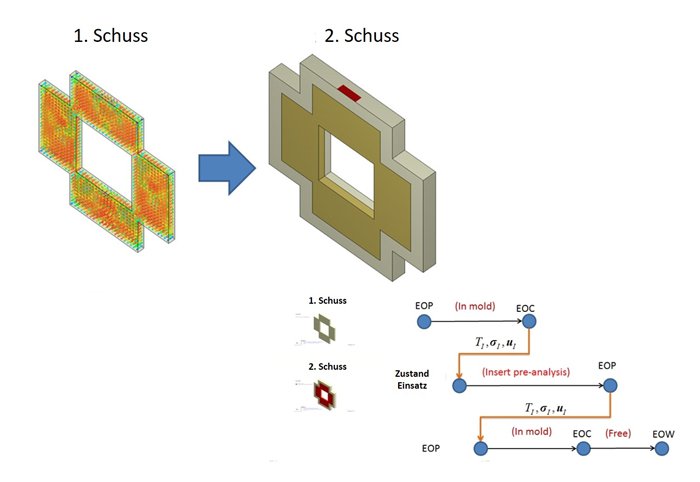
Multi-component simulation considers the properties of the first component
ESPECIALLY FOR OUR USERS
Are you looking for a way to combine different materials in order to specifically combine different properties (e.g. haptics, color, mechanical behavior, ...) in your component? Then multi-component injection molding technology is a proven process. Our article describes how Moldex3D takes the properties of the first component into account in the further process.
Multi-component injection molding technology efficiently integrates two or more plastics into one component and is widely used in the industry. CAE analyses allow product quality to be analyzed in advance and thus appropriate measures can be taken to identify and solve anticipated manufacturing or component problems at an early stage. However, if only the simulation of the second or final component is taken into account, accurate product quality analysis and design optimization cannot be guaranteed. The properties of the first component at the end of the process affect the outcome of the subsequent process due to different properties such as temperature and residual stresses. Therefore, there is a need to consider these effects during simulation of the subsequent process.
The question that must first be asked is how the material properties of the first injection molding process affects the component of the second process. Here, the mechanical and thermal expansion properties of the materials play an important role and directly influence the warpage behavior of the final result. In the multi-component process, the final product may be composed of more than two materials and without coupling the intermediate states of the respective injection molding processes in the simulation, a meaningful analysis is not possible. If a component is made of fiber-reinforced plastic, its anisotropic properties also influence the deformation of the end product. Thus, there is also a direct influence of the fiber orientation on the entire plastic component here.
The mold design and processing conditions derive from the internal pressure and temperature conditions of the first component. Due to the interactions between the different components, the initial state of the first component (insert) leads to changes in the thermal conduction and stress balance of the overall product. Therefore, to ensure the quality of the final product, we must also take into account the manufacturing process of the previous shot.
In Moldex3D, all injection molding processes are simulated with the respective component. In each subsequent simulation step, the previous injection molded part is modeled as an insert with the subsequent component cavity. The results of the filling, packing and cooling phases - including the fiber orientation of the previous process simulation - are included in the simulation for this purpose. Thus, Moldex3D considers the coupling of the different effects and states, including temperature and residual stresses of the previous molded component. In addition, effects such as the re-melting of previous components can be represented.
Interested?
Please contact us: + 49 (0)241-565 276-0 or send us an email to info@simpatec.com
